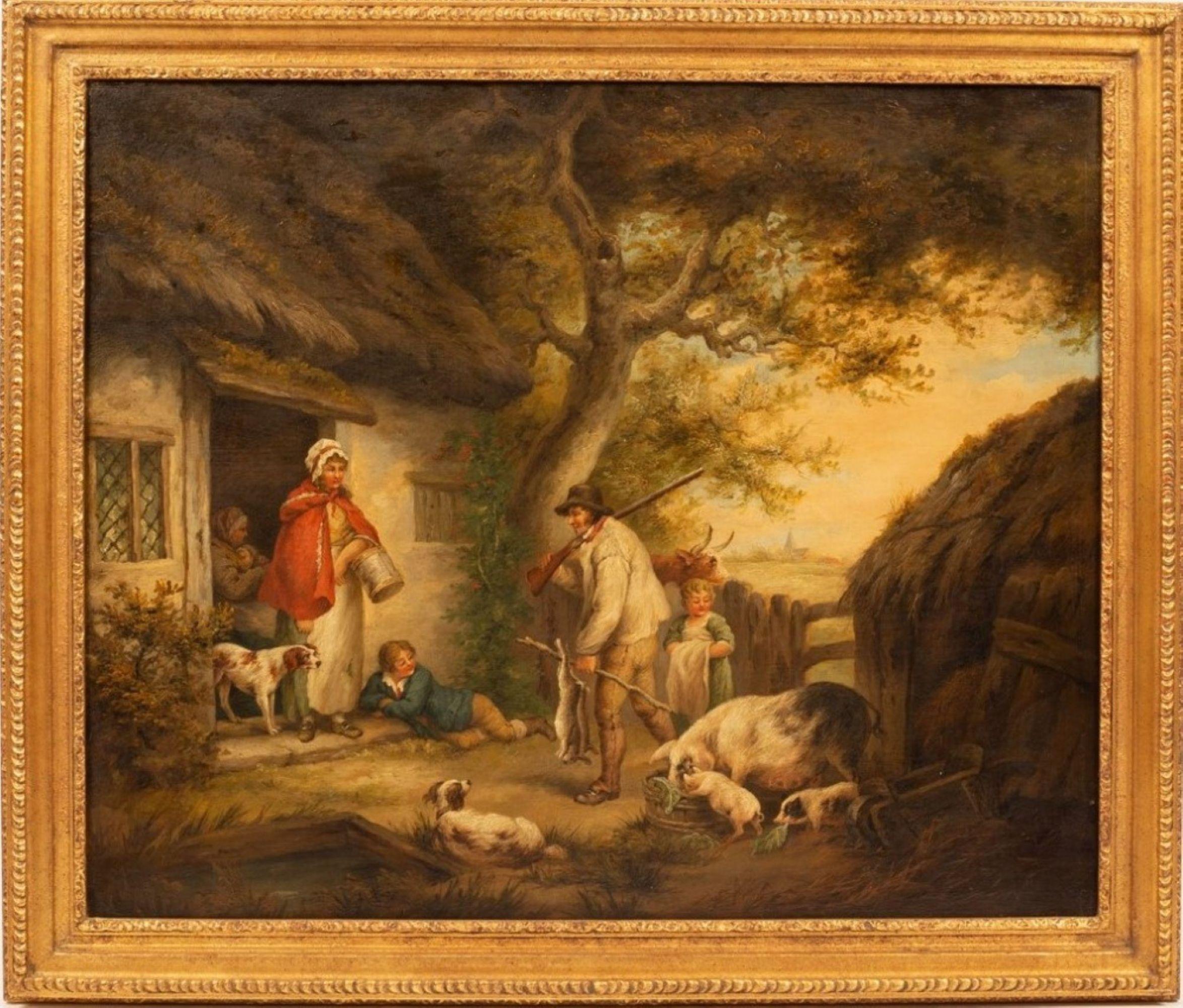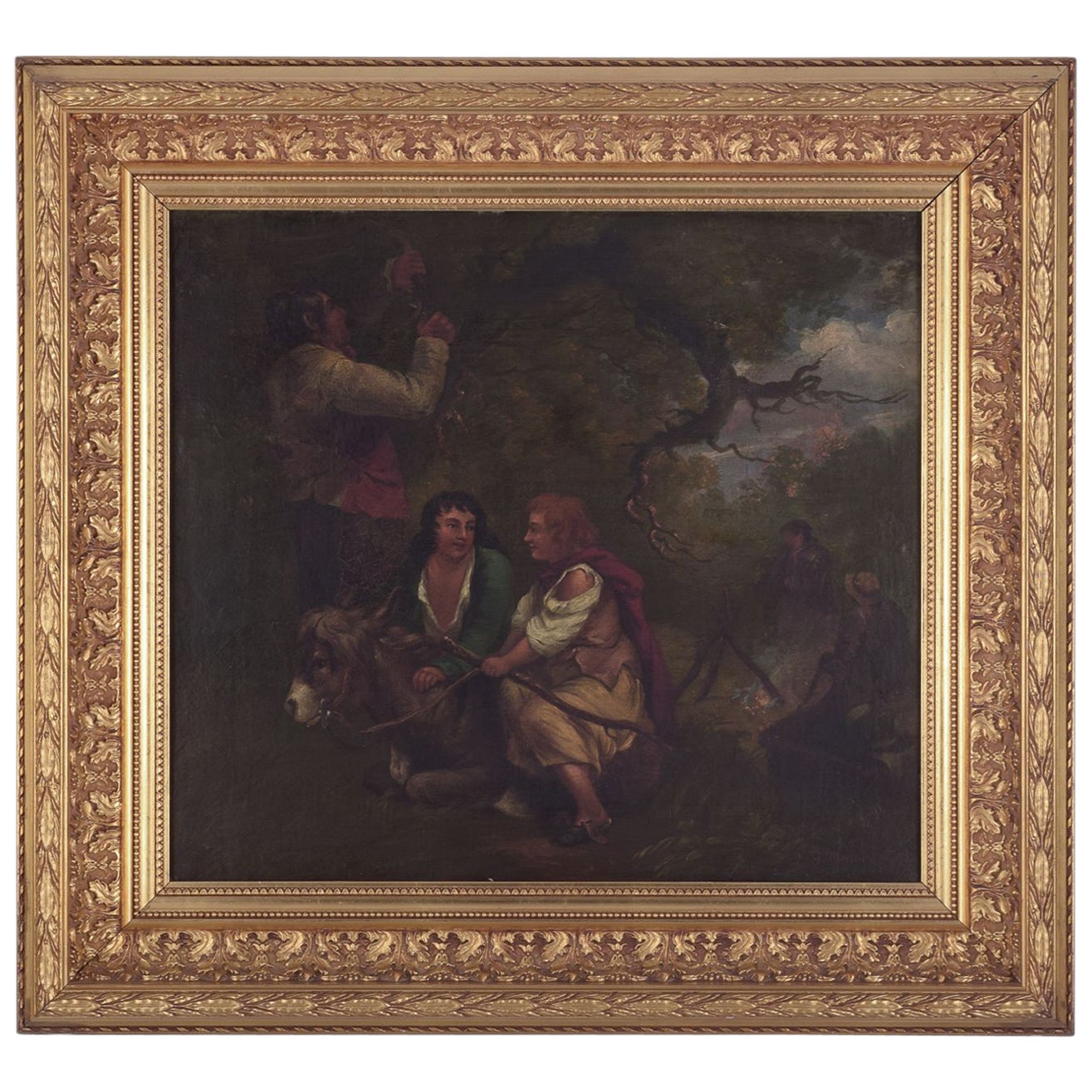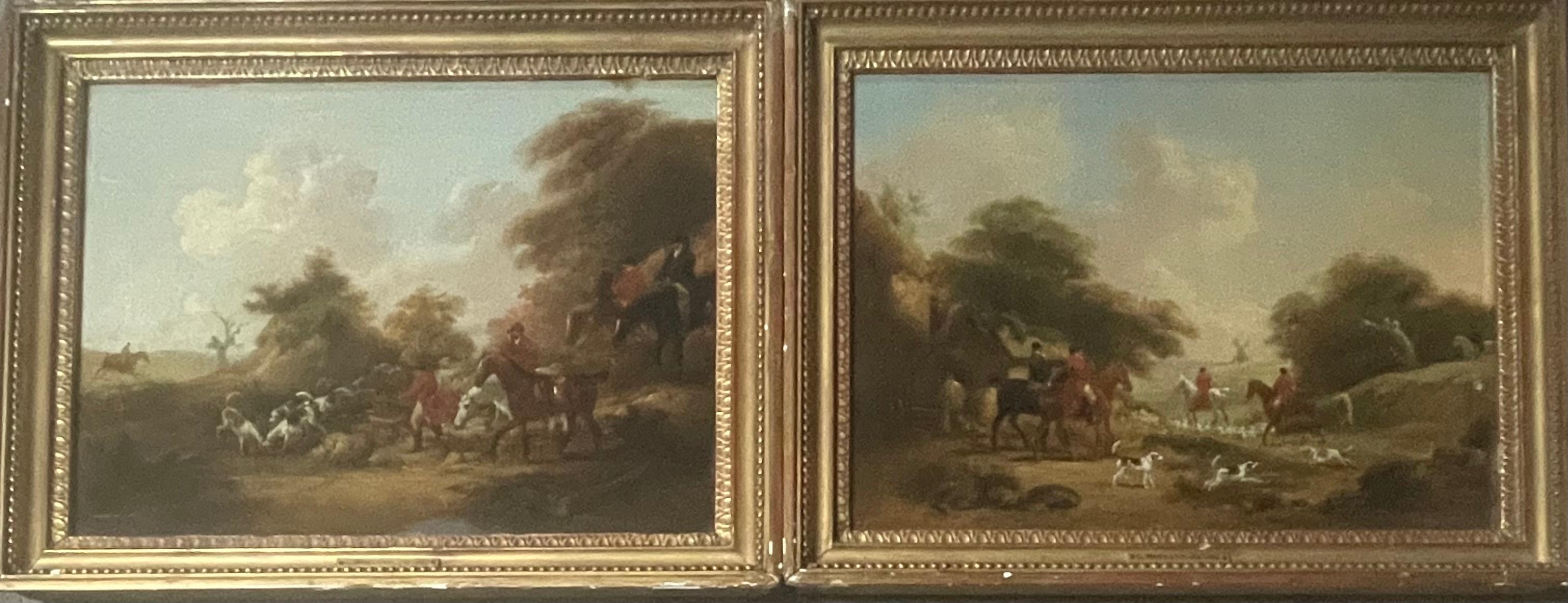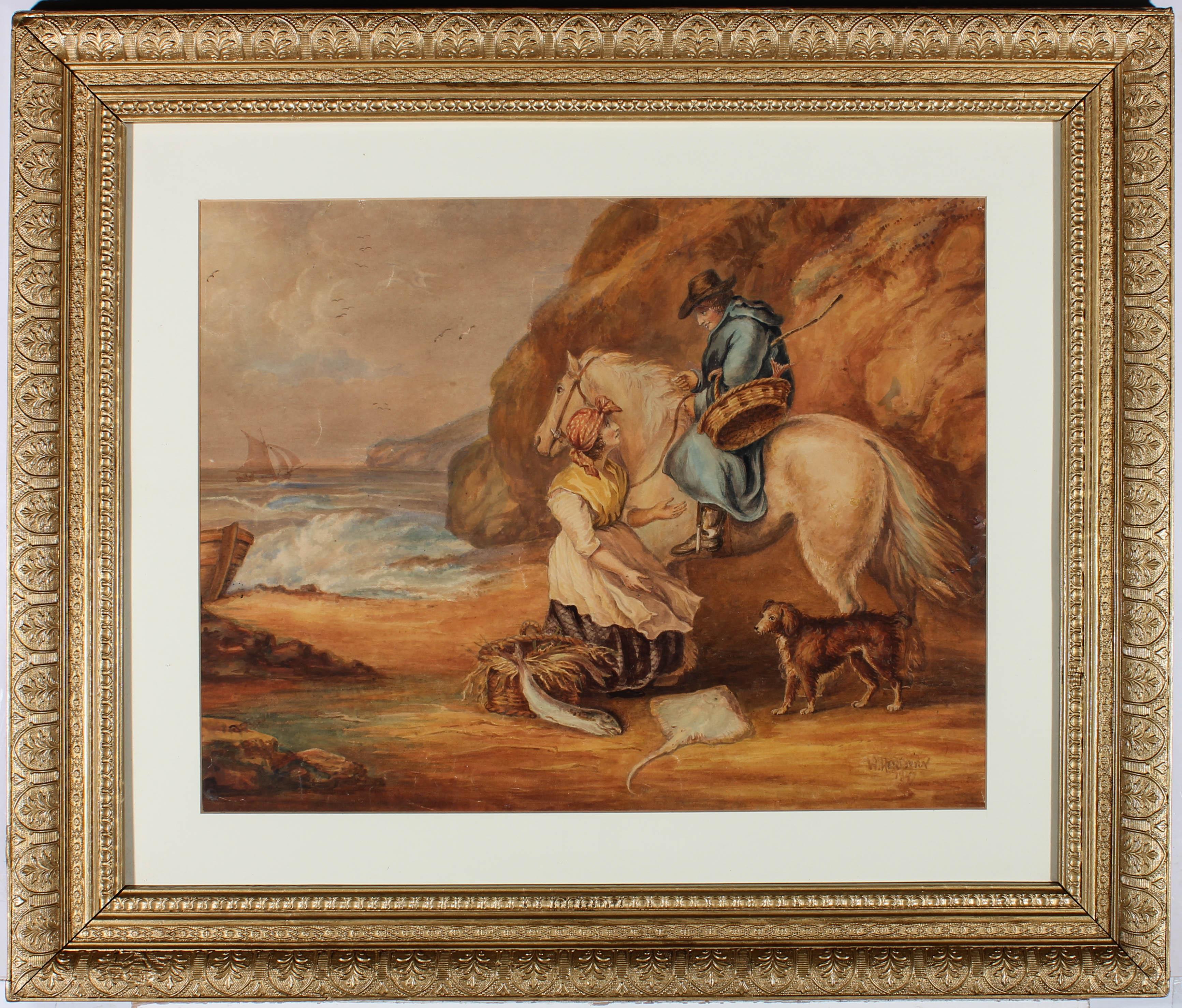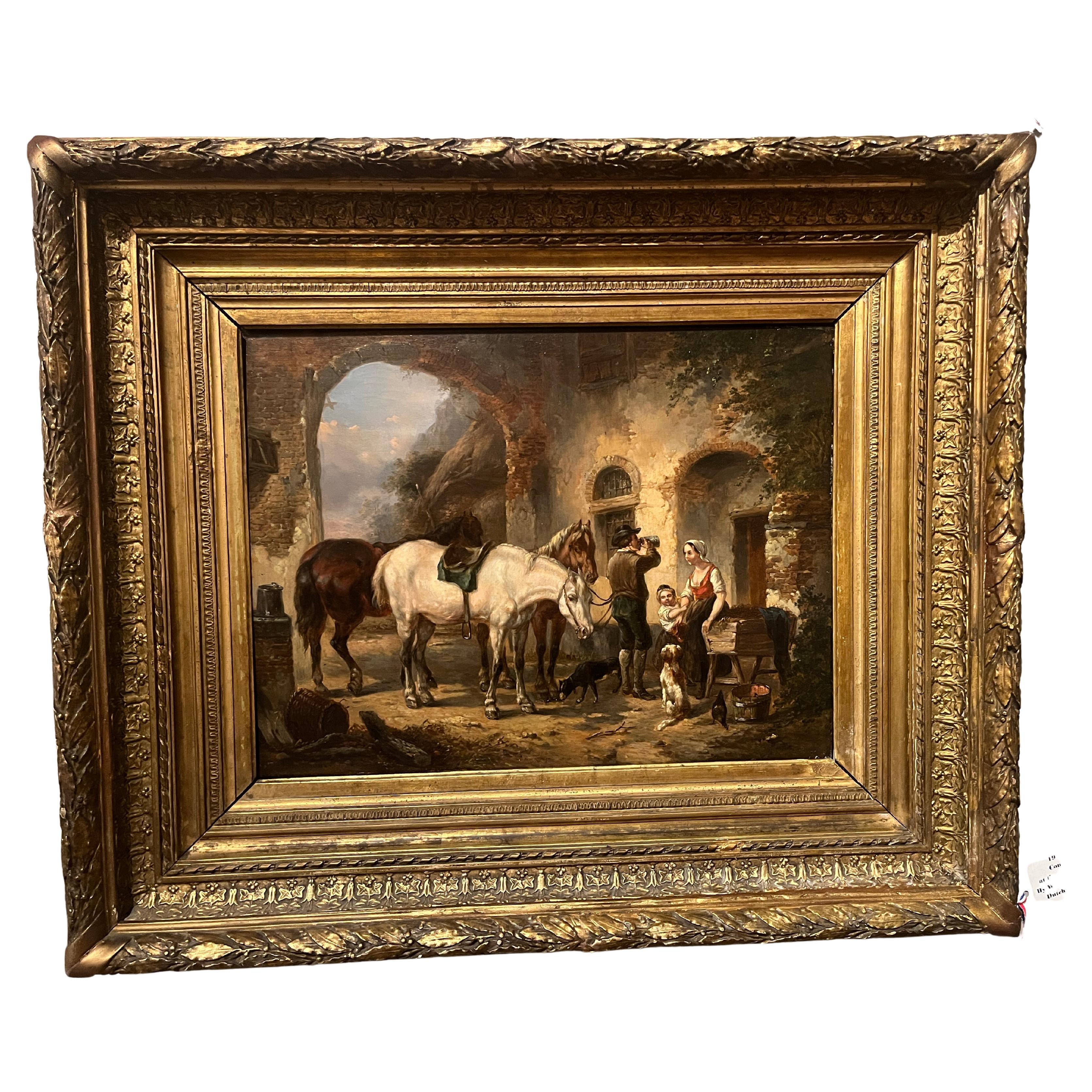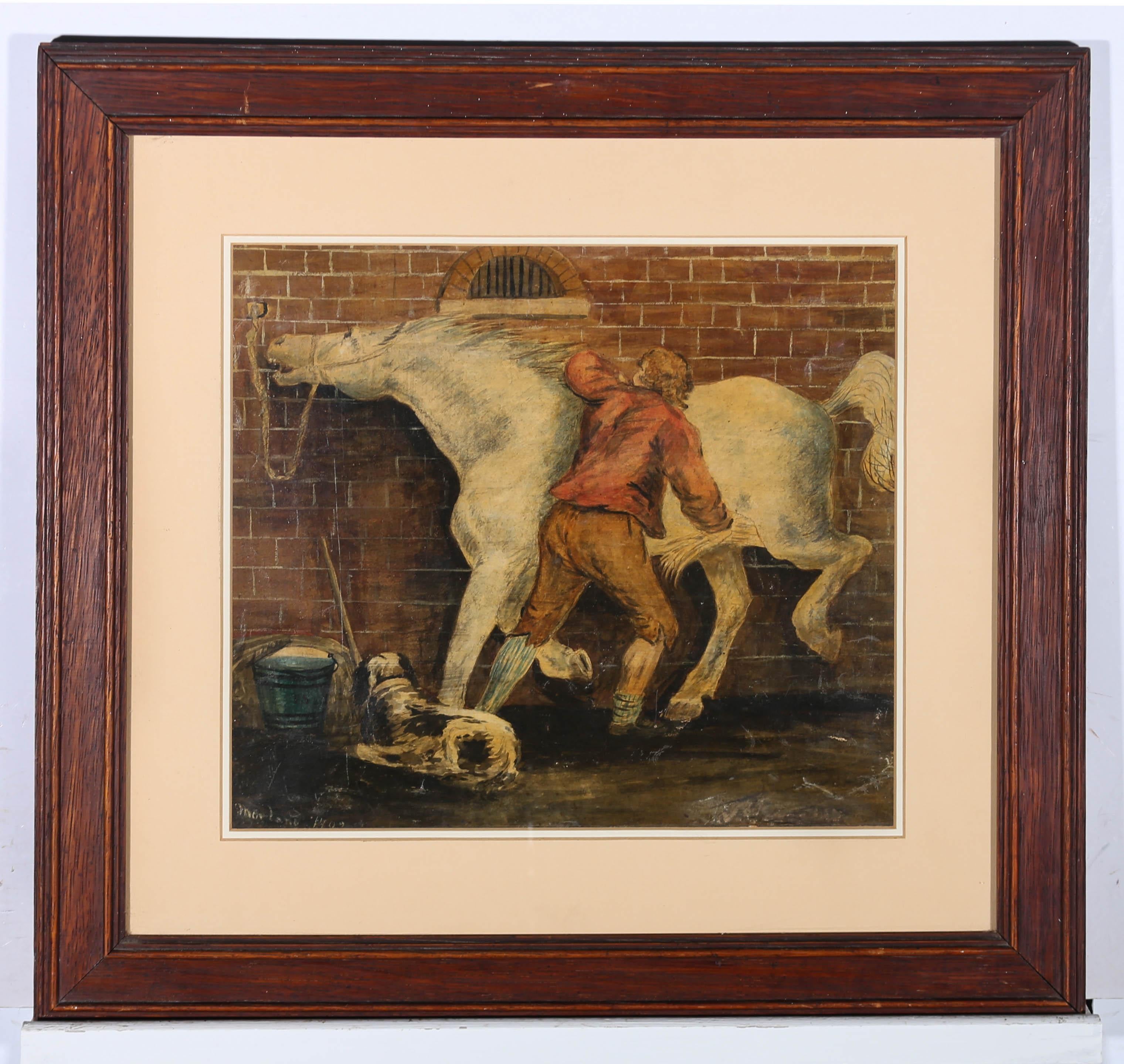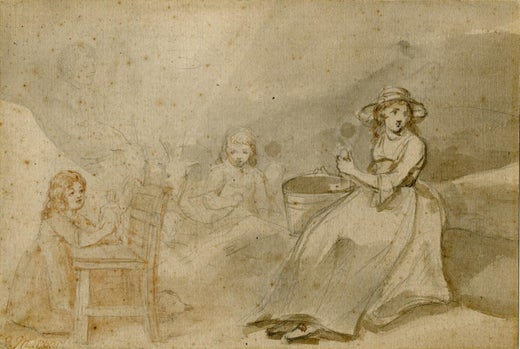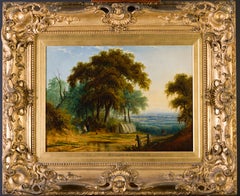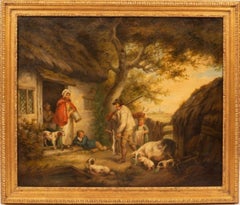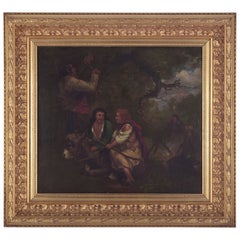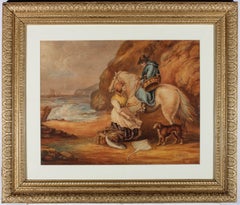Items Similar to Conversation at the gate
Want more images or videos?
Request additional images or videos from the seller
1 of 4
George MorlandConversation at the gatecirca 1790
circa 1790
$3,762.92
£2,750
€3,231.40
CA$5,244.99
A$5,700.40
CHF 3,012.44
MX$68,962.54
NOK 37,517.78
SEK 35,437.88
DKK 24,126.05
About the Item
George Morland 1763-1804, was an English painter who was influenced by the painter Francis Wheatley , landscapes. After 1790 he had developed his own style of painting adopting rustic scenes such as the work displayed. He lived a fairly rackety lifestyle due to his heavy drinking, he was very popular with his easy going manner which left him to be preyed upon by unscrupulous dealers and consequently had very little to show for his efforts. There is a number of biographies of him and a brief one which is quite captivating of his life on Wikipedia. An original work and typical subject for his time and in very good condition.
- Creator:George Morland (1763 - 1804, English)
- Creation Year:circa 1790
- Dimensions:Height: 8.5 in (21.59 cm)Width: 9.5 in (24.13 cm)Depth: 1 in (2.54 cm)
- Medium:
- Period:
- Condition:
- Gallery Location:Douglas, GB
- Reference Number:Seller: No. 1461stDibs: LU2373215256592
George Morland
George Morland (26 June 1763 in London – 29 October 1804 in Brighton) was an English painter. His early work was influenced by Francis Wheatley but after the 1790s he came into his own style. His best compositions focus on rustic scenes: farms and hunting; smugglers and gypsies; and rich, textured landscapes informed by Dutch Golden Age painting.
About the Seller
5.0
Vetted Professional Seller
Every seller passes strict standards for authenticity and reliability
1stDibs seller since 2023
18 sales on 1stDibs
Typical response time: 7 hours
- ShippingRetrieving quote...Shipping from: Douglas, United Kingdom
- Return Policy
Authenticity Guarantee
In the unlikely event there’s an issue with an item’s authenticity, contact us within 1 year for a full refund. DetailsMoney-Back Guarantee
If your item is not as described, is damaged in transit, or does not arrive, contact us within 7 days for a full refund. Details24-Hour Cancellation
You have a 24-hour grace period in which to reconsider your purchase, with no questions asked.Vetted Professional Sellers
Our world-class sellers must adhere to strict standards for service and quality, maintaining the integrity of our listings.Price-Match Guarantee
If you find that a seller listed the same item for a lower price elsewhere, we’ll match it.Trusted Global Delivery
Our best-in-class carrier network provides specialized shipping options worldwide, including custom delivery.More From This Seller
View AllExtensive landscape
By Thomas Creswick
Located in Douglas, Isle of Man
Thomas Creswick R.A. 1811 - 1869, was an English landscape painter and illustrator. Creswick was one of the leading members of the Birmingham School of landscape painters and exhibit...
Category
1840s Landscape Paintings
Materials
Canvas, Oil
A woodland landscape
Located in Douglas, Isle of Man
John Lawson 1868-1909, was a Scottish landscape painter who exhibited a number of paintings at the Royal Scottish Academy, recognising his place among the Scottish art scene. Lawson ...
Category
Late 19th Century Landscape Paintings
Materials
Oil, Mahogany, Panel
Les Levandries ( The washerwomen )
By Léonard Saurfelt
Located in Douglas, Isle of Man
Leonard Saurfelt !840-circa 1890, was a French landscape and genre subject painter. This subject sems to be a preferred demonstration of the hard work women endured during the 19th C...
Category
1870s Landscape Paintings
Materials
Canvas, Oil
Windsor Great Park
Located in Douglas, Isle of Man
James Stark 1794-1859, was an English landscape painter, exhibited at the Royal Academy, the British Institution, and the Norwich School of Artists. Stark studied under John Crome, ...
Category
Mid-19th Century Landscape Paintings
Materials
Oil, Panel
Fete Gallant
By Adolphe Monticelli
Located in Douglas, Isle of Man
Adolphe Joseph Thomas Monticelli 1824-1886, was a French painter and influencer of Vincent van Gogh. Monticelli was well known to Theo and Vincent Van Gogh, Theo acted as agent for ...
Category
Late 19th Century Landscape Paintings
Materials
Oil, Panel, Mahogany
Well Digger Lane, Guildford, Surrey
By Claude Muncaster
Located in Douglas, Isle of Man
Claude Muncaster R.W.S. 1903-1974, was an English painter and watercolorist. He originally signed his works Hall being the son of Oliver Hall R.A. , however to forge his own career t...
Category
1950s Landscape Paintings
Materials
Oil, Canvas
You May Also Like
George Morland(follower) landscape, oil, country scene, dogs, pigs, cottage
Located in York, GB
Follower of George Morland landscape country scene depicting pigs and dogs etc With presumably husband wife and child outside their cottage also maybe gra...
Category
19th Century Realist Landscape Paintings
Materials
Oil
George Morland, well-listed British artist. Oil on canvas. Pastoral scene, 1792
Located in København, Copenhagen
Pre-owned goods are exempt from import duties for U.S. customers.
Therefore, no import tariffs will be applicable to your purchase.
George Morland (1763-1804), a well-listed Britis...
Category
Antique 1790s British Paintings
Materials
Canvas
$4,480 Sale Price
20% Off
“Pair of Hunt Scenes, Oil on Canvas”
By George Morland
Located in Warren, NJ
This is 2 original oil paintings. Both are beautiful pieces. each lined and with craquelure; Meet by the Farmhouse with a chip in the paint along the left edge and an abrasion along ...
Category
18th Century Paintings
Materials
Oil
After George Morland - 1847 Watercolour, Selling Fish
Located in Corsham, GB
This charming watercolour scene is after George Moorland's original oil painting depicting a woman trying to sell fish to a man on horseback. A small terrier dog looks at the array o...
Category
Mid-19th Century Figurative Drawings and Watercolors
Materials
Watercolor
$465 Sale Price
20% Off
19th Century Conversation At The Inn's Entrance - By Wouterus Vershuur
Located in Scottsdale, AZ
19th Century Conversation At The Inn's Entrance - By Wouterus Vershuur
Gorgeous painting purchased in France.
See detailed photos
Category
Antique 19th Century French Renaissance Revival Paintings
Materials
Paint
Follower of George Morland - 1901 Watercolour, The Grooming Stable
Located in Corsham, GB
A dramatic stable interior scene in watercolour, showing a man hurriedly grooming a distressed horse. The scene is typical of George Morland's subject matter and style. The artist ha...
Category
Early 20th Century Figurative Paintings
Materials
Watercolor
More Ways To Browse
Rustic Scenes Painting
Joaquim Mir
Magdalen College Oxford
Monterey California Painting
Ocean Sunset Painting
Painting Of A Canoe On A Lake
Regents Park
Sangre De Cristo
Small Paintings In Frames
Studio Canals
Vincent Price Collection Art
Bastien Lepage
Bay Bridge
Big Sur Oil Painting
Canal French Painting
Cape Ann Art
Cape Cod Painting
Cloud Painting Pink
